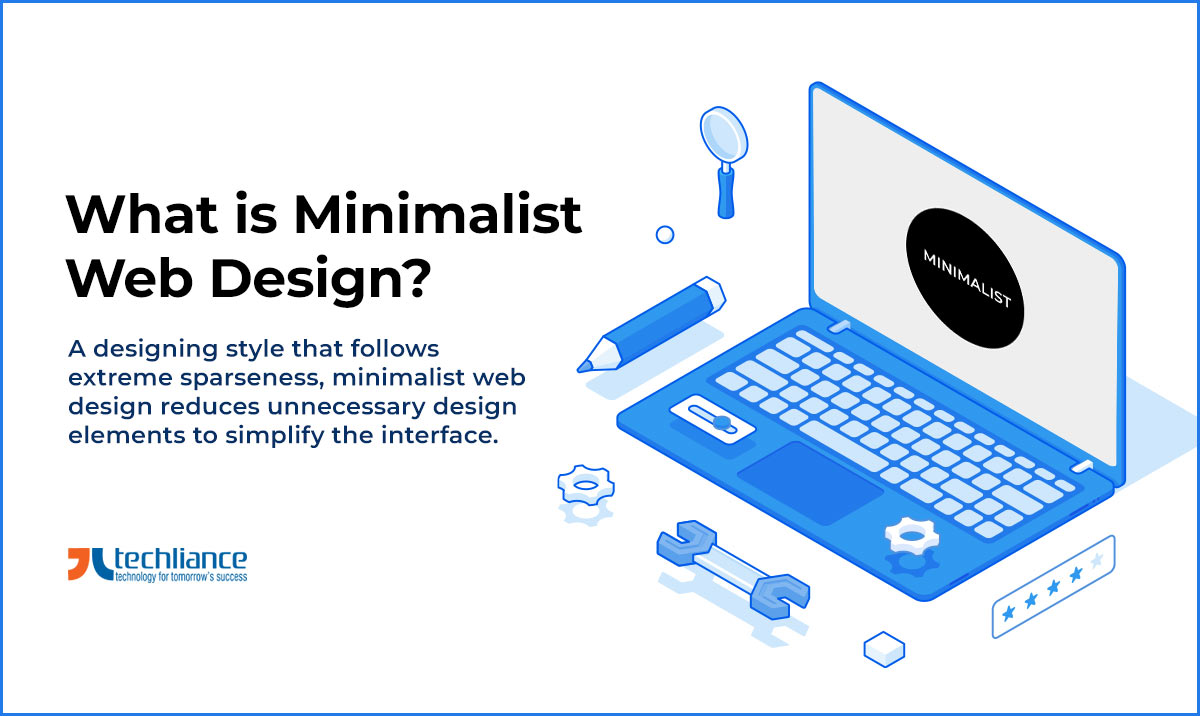Beyond Daily Yonder: Insights and Updates
Exploring daily news and insightful information from various fields.
Less is More: Why Minimalist Web Design Captivates Instantly
Discover why minimalist web design captivates instantly and transforms user experience. Embrace simplicity for stunning results!
The Psychology Behind Minimalist Web Design: What Makes It So Captivating?
Minimalist web design has gained immense popularity in recent years, and the psychology behind it reveals why it captivates audiences so effectively. By stripping away unnecessary elements, minimalist designs create a sense of clarity and focus. This simplicity reduces cognitive load, allowing users to navigate the site with ease and concentrate on the content that truly matters. According to cognitive psychology, when users encounter a clean layout, their brains can process the information more efficiently, leading to a more enjoyable and engaging experience.
Furthermore, minimalist designs often evoke a feeling of calm and sophistication, enhancing emotional responses. The use of ample white space, limited color palettes, and straightforward typography contributes to this feeling, making users more likely to stay on a page longer. This aligns with the principles of human-centered design, which prioritize user experience and satisfaction. As a result, brands that adopt minimalist aesthetics not only appeal to the visual preferences of their audience but also foster a deeper connection through the psychological allure of simplicity.

Essential Elements of Minimalist Design: How to Create a Striking Web Experience
Minimalist design is centered around the principle of less is more, allowing users to experience a clean and uncluttered web interface. To achieve a striking web experience, it is essential to focus on the following elements:
- Whitespace: Utilizing ample spacing enhances readability and directs attention to key components.
- Color Palette: Limit your color choices to two or three harmonious shades to promote coherence.
- Typography: Choosing a simple, legible font can have a significant impact on user experience.
Moreover, the functionality of a minimalist design should never be compromised for aesthetics. Ensure that every element serves a purpose. A well-structured layout combined with intuitive navigation makes it easier for users to find what they need. Incorporating high-quality images also adds visual appeal without overwhelming the viewer. By focusing on these essential elements, you can create a striking web experience that resonates with your audience and enhances usability.
Is Less Really More? Debunking Myths About Minimalist Web Design
The principle of minimalist web design often evokes the phrase, 'less is more,' suggesting that a clean, uncluttered layout is inherently superior. However, this concept can be misleading. While simplicity can enhance usability, particularly for mobile users or on sites prioritizing speed, it isn't a one-size-fits-all solution. Different audiences have varying preferences; some may appreciate a more vibrant and content-rich experience. It's crucial to balance aesthetics and functionality, ensuring that the design not only looks good but also serves the purpose of engaging and informing visitors effectively.
Another common myth surrounding minimalist web design is that it limits creativity. In truth, minimalism can be a powerful tool for highlighting key elements of a website. By reducing distractions, designers can guide users' focus to the most important aspects, such as calls to action or impactful visual content. Effective minimalist design employs white space, typography, and color strategically to create an engaging experience without overwhelming the user. Ultimately, the essence of minimalism is not about stripping away all elements but rather about thoughtfully selecting which components communicate the intended message most clearly.